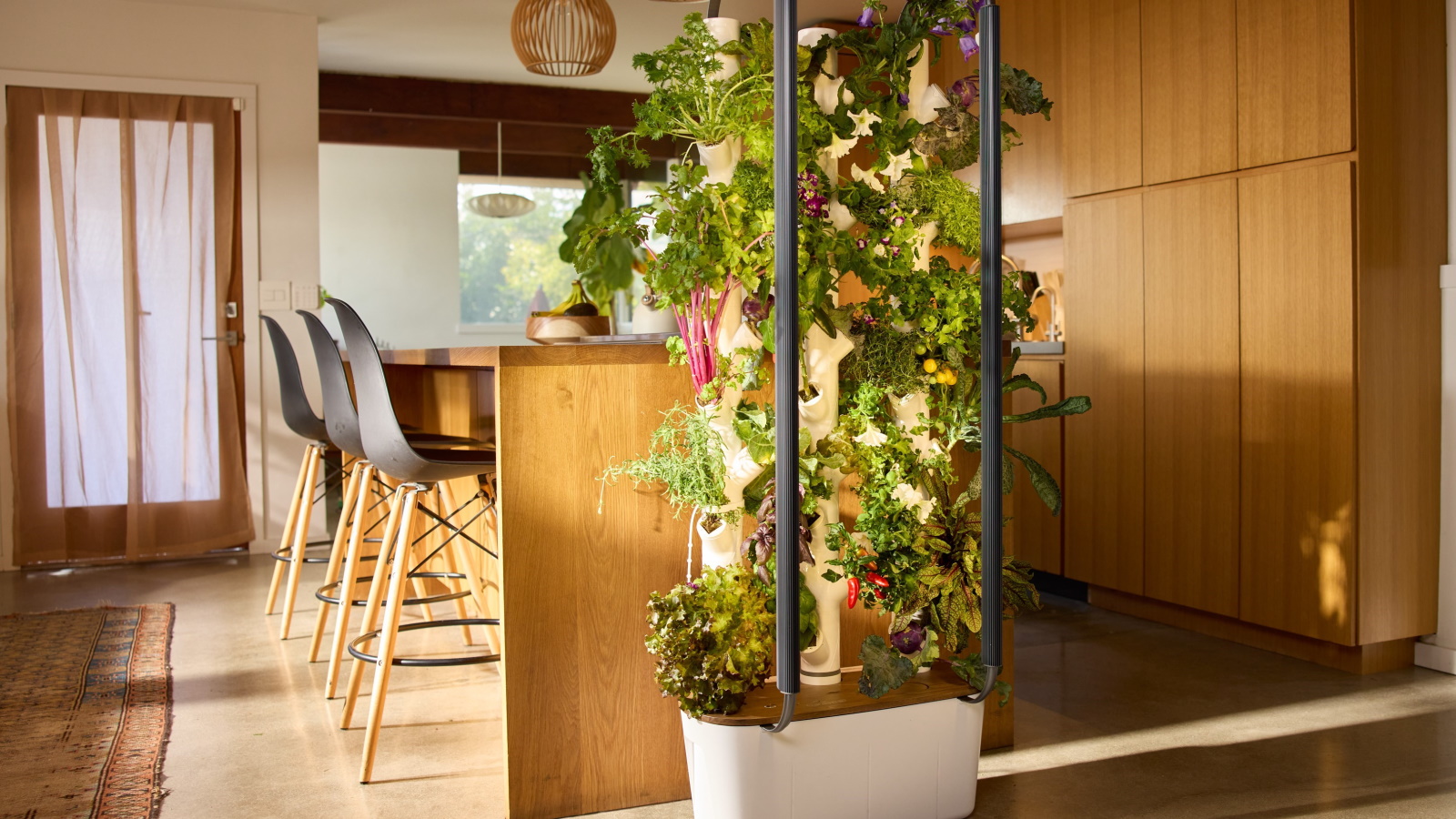
Hydroponic gardening is revolutionizing how plants can be grown indoors. This method of growing plants without soil is an innovative approach that looks set to dominate trends in the coming years and has already become a favorite of urban gardeners seeking indoor garden ideas.
At first glance, hydroponic systems may appear like something from a science laboratory, but gardeners of all abilities can embrace this innovative approach to cultivation. Today, the availability of sleek, smart and easy-to-use indoor growing systems means that anyone - even those with just a few square feet spare - can grow their own herbs, salads and fruit.
Indeed, the tide has turned for would-be growers and aspiring farmers who struggle for space in small apartments, and growing hydroponically provides an ideal environment for plants to thrive indoors. Here, we share all the information you need to understand how this sustainable solution for home gardening works.
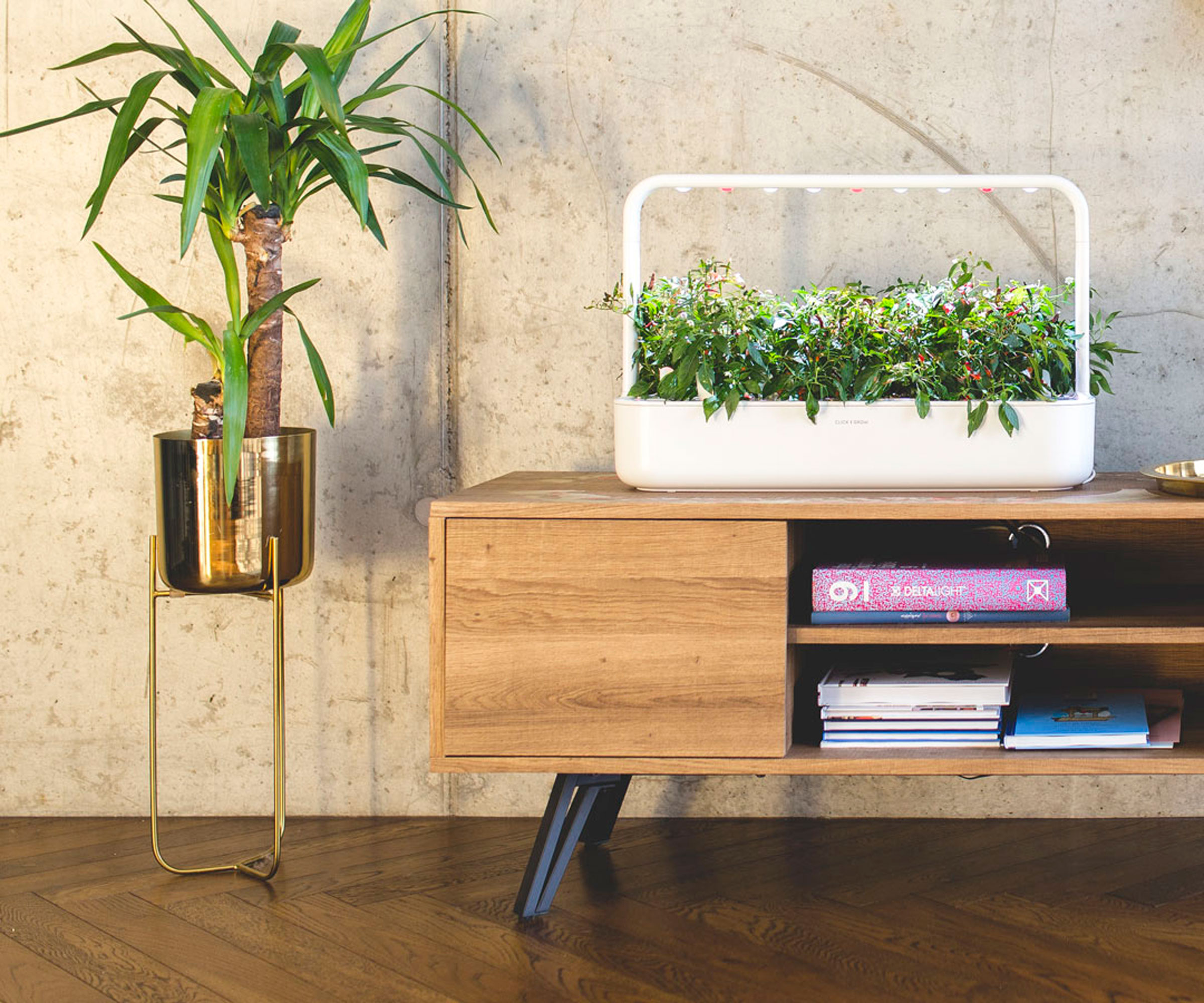
Hydroponic Gardening for Sustainability
Hydroponic gardening is an innovative and sustainable approach to indoor cultivation. It is useful for many of us who reside in small apartments with limited outside space, and this trend looks set to dominate how we grow our food in the future.
What is hydroponic gardening?
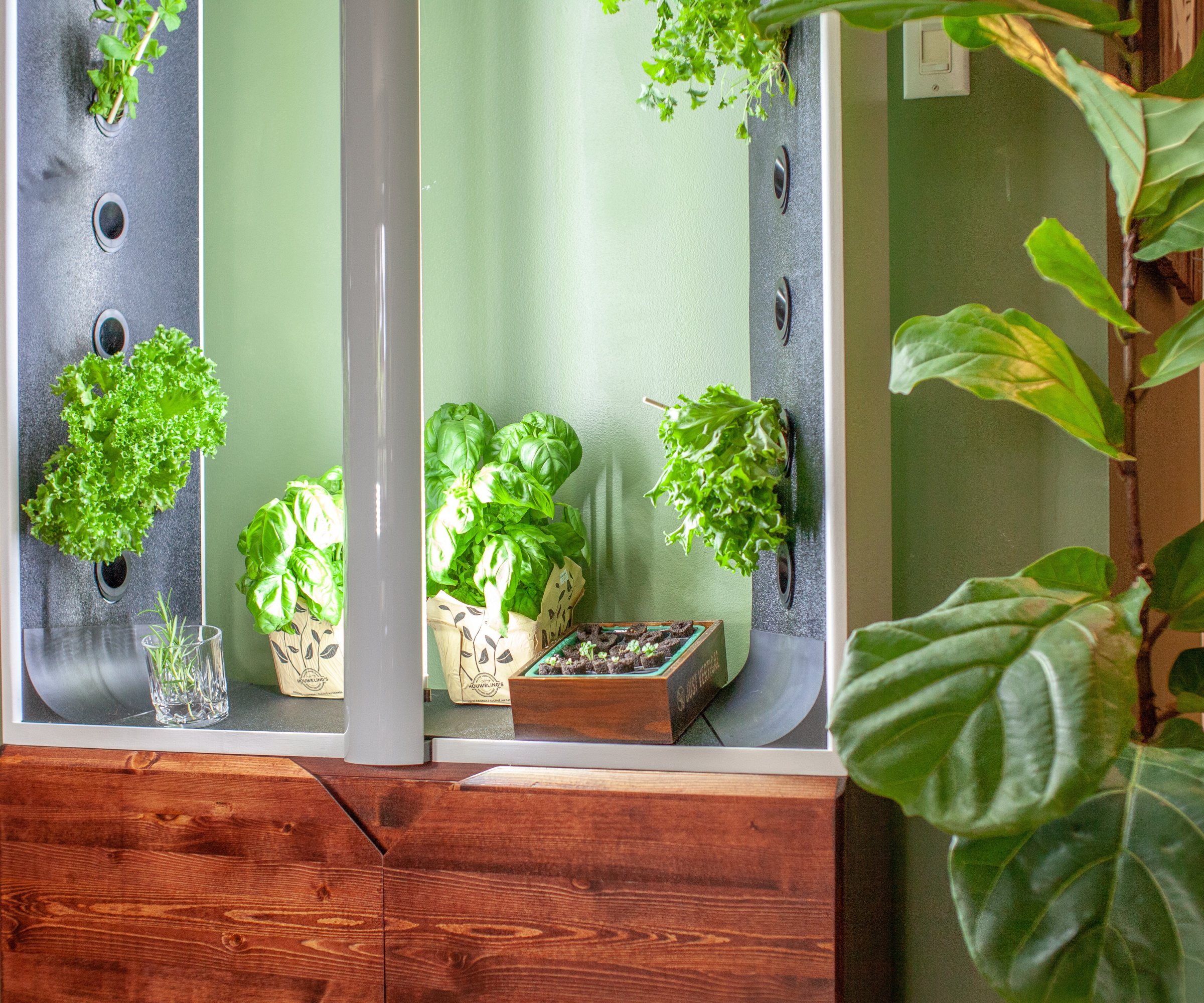
Hydroponic gardening has gained popularity in recent years, particularly among gardeners who want to grow their own food but have limited space.
While it may seem futuristic or complex, hydroponic growing is a relatively simple gardening approach once it is understood. Often, this form of indoor gardening produces better results, improved productive yields and fewer pests than traditional gardening methods.
When grown hydroponically, plants are cultivated in a soil-less growing medium such as coco coir or rock wool. The roots of the plants are then either submerged or periodically watered with a nutrient-rich liquid, providing all the goodness they need to thrive. This eliminates the need for soil, which has proven popular with those looking to grow indoors but who prefer to keep soil, worms and slugs outside.
Hydroponic growing features a range of different approaches to growing without soil. For example, a DIY approach to hydroponic growing that is both quick and easy can be achieved by simply using an empty mason jar and a small amount of water to grow your own beansprouts.
If, however, you are looking for something slightly more sophisticated or for those considering how to create a vertical garden, many of these systems are cleverly designed to utilize wall space. Indeed, many of these vertical systems also come complete with lighting fixtures and water pumps, meaning that, as a grower, you do not have to worry about space, lighting, temperature or watering. Simply sit back and watch as your fresh and nutritious herbs and salad leaves grow.
Gardyn growing system for hydroponic gardening
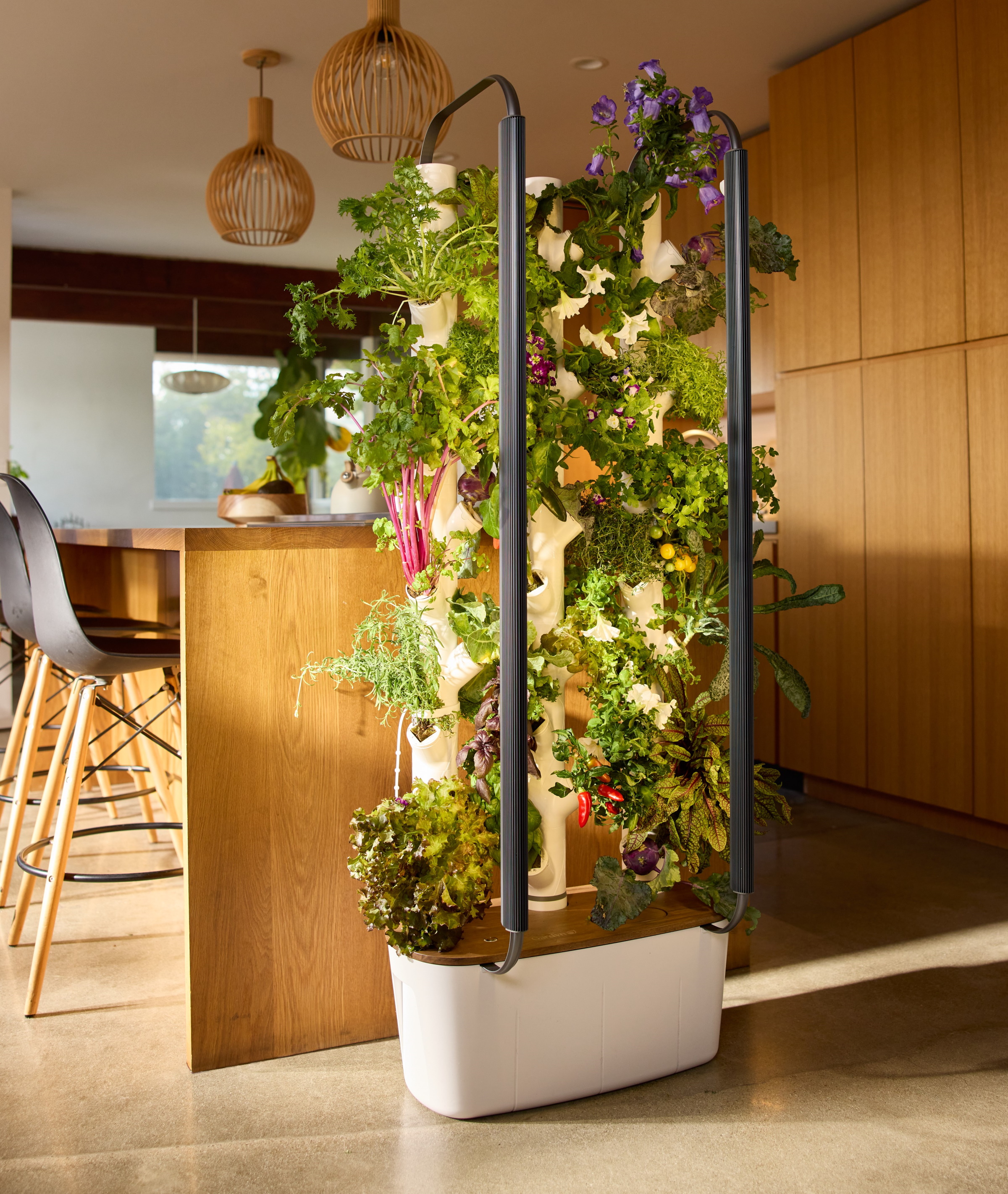
While there are many hydroponic growing systems available, it is always best to opt for a model that is both aesthetically pleasing to suit your home decor, and importantly, one that is effective at growing crops. Of the many growing systems available, some tend to look more laboratory than living room.
One growing system for hydroponic gardening that we at Homes & Gardens love combines good looks and growing capabilities. Gardyn's new home kit 4.0 is the latest model from Gardyn, designed specifically to grow fresh produce, herbs and flowers. When full of plant life, this growing system takes the shape of a living wall, as seen in the image above, adding a verdant accent to any interior.
It is not just the aesthetic that has impressed us with this new model, but the technology. Growing can be customized to suit your lifestyle and needs, with lighting and watering preferences managed via the Gardyn app. As with many of the best gardening apps that are today a useful tool for the modern gardener, this feature helps to reduce stress and worry for plant parents, particularly when on vacation or out of town.
This hydroponic growing system is also a sustainable approach to indoor gardening. 'Compared to gardening outside, Gardyn systems use 95% less water by recirculating water and plant nutrients at very precise times, depending on the growth stage of your plants,' says Lindsay Springer, plant expert and Head of Plants and Nutrition for Gardyn.
In addition, 'by growing indoors using a Gardyn system you eliminate the need for herbicides and pesticides,' Lindsay adds. 'Kept away from the pests and pathogens, your plants will be less stressed in controlled indoor environments, tending to grow healthier and faster when compared to outdoors.'
This latest model is also energy efficient, which is a concern of many indoor gardeners when considering hydroponic systems and grow lights. 'This is our most energy-efficient model yet, using 20% less energy than our previous systems,' Lindsay adds. 'It consumes about as much energy as a traditional 65W light bulb!'
Shop hydroponic gardening
This latest model of the Gardyn growing systems is designed to easily grow fresh produce, herbs and flowers using energy efficient LED lights, redesigned columns and more. No tools are required for this simple 30-minute assembly.
The most flexible microgreens system ever – choose how much and what you grow, every time. Just add water to the Gardyn Microgreens Kits, pop in a seed pad and growth plate, then top with the lid for harvests in as little as 7 days!
Specially designed to germinate microgreens with ease, the Gardyn Sprout Nursery boosts germination speed and success so you can enjoy more harvests sooner. Ideal for growing Microgreens and sprouts.
How sustainable is hydroponic gardening?
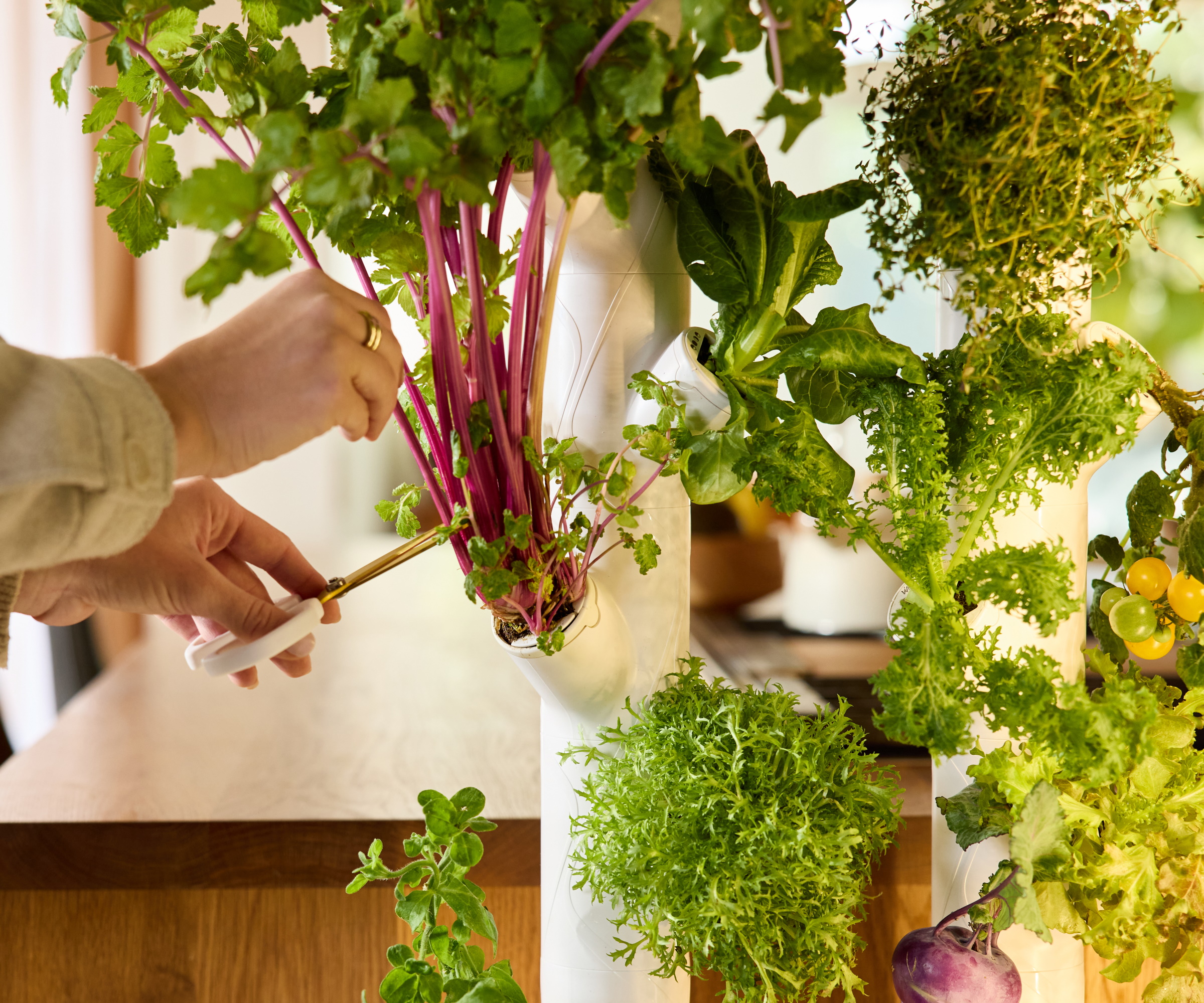
Hydroponic gardening is indeed a sustainable approach to indoor gardening and there are many environmental advantages to be gained by switching to the innovative and distinctly modern world of hydroponics.
Growing systems can use up to 90% less water than traditional soil-based gardening in the backyard, which is a consequence of the recirculation and reuse of water that is not lost through runoff.
Indoor hydroponic systems also allow for year-round cultivation regardless of the season, weather or the US hardiness zone you reside in. Not only does this maximize productivity, but it means that you will buy fewer salad leaves and herb packets from the store, thereby costing you less money. Helpfully, you will also only cut what you need, wasting far less food.
Finally, hydroponic growing systems often utilize vertical spaces efficiently, creating a living wall effect and allowing for high-density planting. For many people with limited outdoor or indoor space, these smart growing systems can be transformative.
FAQs
What plants can I grow hydroponically?
Quick-to-grow crops that do not produce fruit such as herbs and salad leaves are a great choice for hydroponic growing in the winter. Many salad or lettuce varieties grow very quickly, and can be ready to harvest in under 8 weeks. In the summer months, why not try growing strawberries, tomatoes or peppers, which can all grow well in a hydroponic system.
Growing hydroponically is a sustainable and space-saving approach to gardening indoors, and this transformation method will certainly continue to captivate urban gardeners.
If you want to try growing your own food indoors but aren't ready to commit to a hydroponic growing system, why not consider growing some of the best microgreens, such as radishes or beets, both of which can be grown in a small container on a sunny windowsill.







